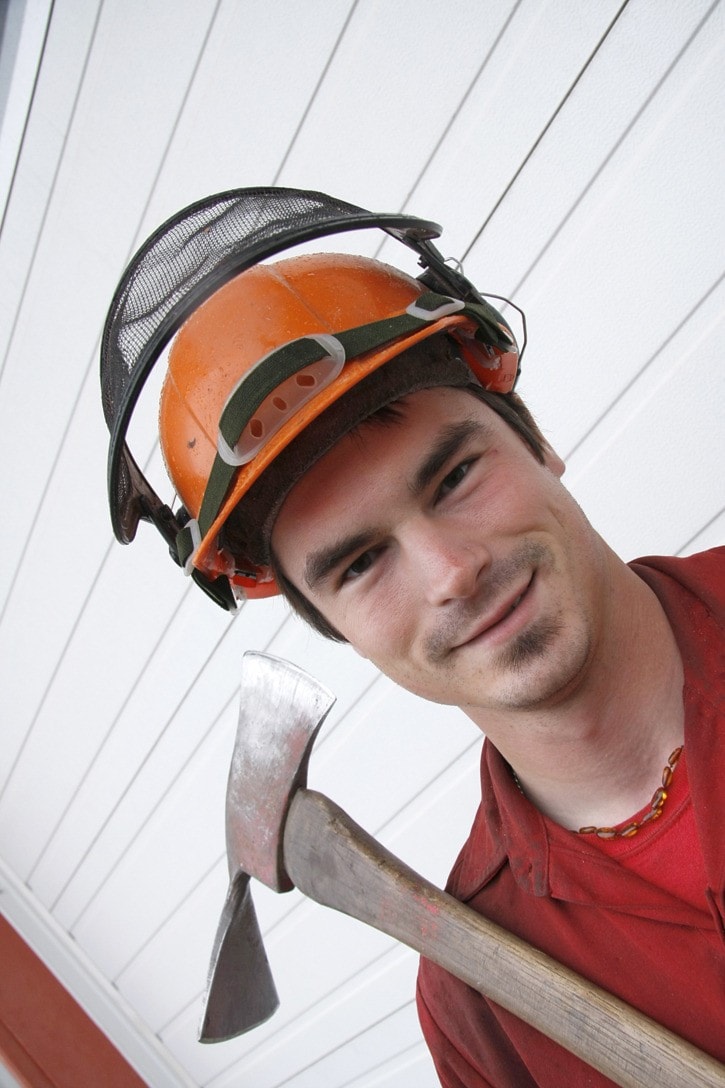With the hot weather finally here, lightning storms have moved into the valley and initial attack crews with the provincial Wildfire Management Branch are on the ready for the inevitable, a forest fire.
There are four initial attack crews in the region, two in Telkwa and two in Houston.
Initial attack crews, as their name indicates, are the first fire fighters to attend a forest fire.
These 3 - 4 person crews are the first on scene and can stay on scene for up to 24 hours without being re-supplied, explained Chris Werrell, 27, in his fourth year with initial attack.
Unless houses or other important infrastructure are at risk, or there is no road access, in which case the crew travels by helicopter, the initial attack crews arrive by truck.
“We try to respond within 30 minutes of getting the call,” Werrell, a Type I forest firefighter, said.
Arriving at a fire, the crew leader makes an evaluation of the fire and reports back to camp and an action plan is devised.
Part of the initial assessment can include Werrell identifying and felling trees posing a risk of falling as well as providing additional information to the crew leader.
Once firefighters are at the fire, the crews work as quickly as they can to try and extinguish or at least control the blaze.
The initial attack crew uses several strategies when fighting a fire.
Indirect methods include clearing brush to remove fuel, felling trees, digging trenches and even with control burns, “Fighting fire with fire,” Werrell said.
The standard direct method of fighting a forest fire is to set up water pumps and establish hose lines.
“Hit it hard, hit it fast, that’s our motto,” Werrell said.
Although hitting a fire as quickly and as hard as possible is important in the initial stages, Werrell said safety is the primary focus at all times.
“Crew safety is always number one,” Werrell said.
“If something’s out of control we’re not going to go running in with hoses on our backs.”
Being a forest firefighter is not for the faint of heart.
Initial attack crews often find themselves right up against the fire, even inside of a fire, but when possible avoid being upslope or downwind, Werrell explained.
Although every precaution is taken to assure the safety of the fire crew, conditions can change quickly, especially wind direction.
Werrell recounts several near-misses with falling trees and another time, while fighting the Binta Lake fire last summer, when the wind changed direction causing the fire to jump the road.
With their exit route effectively blocked off, the crew were forced to park their vehicles in a nearby clearing and request to be airlifted out of the area.
To become a firefighter with the Wildfire Management Branch, individuals must attain their Type I certification which involves a boot camp where prospective firefighters learn about fire behaviour, the equipment used to fight fires as well as wilderness survival, safety training, helicopter safety and helipad construction.
The latter is important because there isn’t always a clearing where a helicopter can land close enough to a fire for the initial attack crew to be effective.
In this case, a firefighter is lowered to the ground who can then clear an area to allow the helicopter to land or at least hover close enough to the ground to allow the firefighters to exit the helicopter safely with their gear.
When not fighting fires, the crew spend time training, maintaining their fitness as well as doing community service, Werrell, a former member of the Canadian junior cross country team, said.
